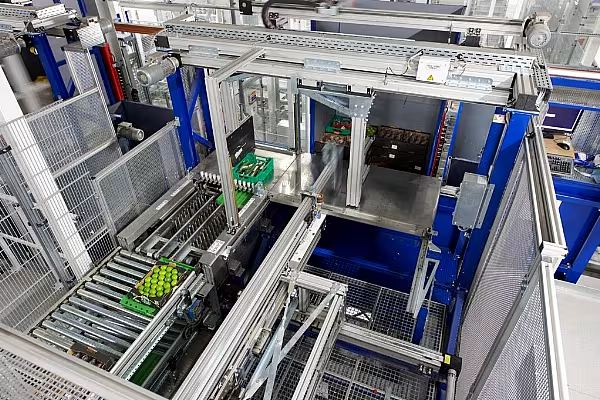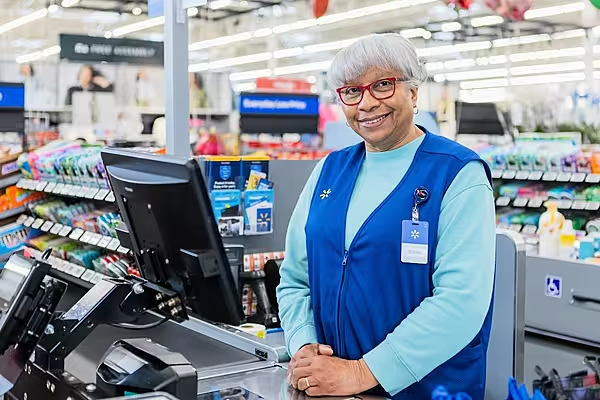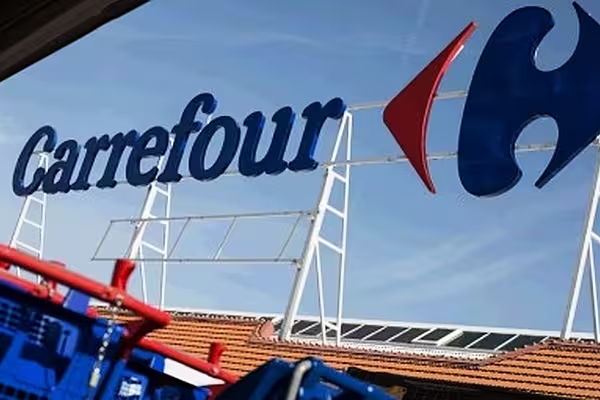The revolution in food retail logistics began in Parkstein, Germany, in 2003. Today, WITRON’s OPM system is the world’s most successful fully automated logistics and order-picking system for cases.
The story of WITRON’s Order-Picking Machinery (OPM) system began at founder Walter Winkler’s coffee table. The breakthrough came with a cake and a cake server from the WITRON founder, which gave birth to the COM – the heart of the OPM system.
Just as a cake lifter glides under the piece of cake, so the COM moves under the items to be picked and uses them to load pallets and roll containers for food retailers’ stores fully automatically, product gently, store friendly, and without errors.
The OPM system celebrated its 20th anniversary in 2023, with almost 100 OPM systems in operation today, supplying more than 35,000 stores and 100 million consumers in North America, Europe and Australia every day.
A Revolution In Food Retail Logistics
Helmut Prieschenk, CEO of WITRON, and Karl Högen, CEO of WITRON North America, agree that the OPM was a revolution for the food retail industry.
“That was Walter Winkler’s masterpiece,” says Prieschenk. “The pilot customer and the impetus for the development of the OPM system came via the food retailer Kroger, from the US.”
The Europeans quickly followed – the first OPM logistics centres in Europe were built for Mercadona, in Spain, and Edeka, in Germany. The initial situation is hardly any different today.
“For many retailers, issues such as a lack of personnel and high staff fluctuation were already a major challenge in their conventional warehouses back then,” adds Högen.
“This is not surprising,” Prieschenk replies. “Millions of tonnes of food were moved by human hands. Employees had to bend down, lift, and carry heavy loads. That is already challenging and no fun in the dry-food sector – and even less so in the fresh- and frozen-food environment.”
“The pallet is built store friendly – individually, according to the layout of the respective store,” says Högen. “It only needs to be handled once in the store. It can directly be used to replenish the shelves or is sent to the back room.”
In addition, there is less food waste due to damaged goods during transportation or unpacking. Thanks to new packaging technologies in the OPM system, the store managers and their staff members also have to dispose of less wrapping.
As Högen puts it, “The OPM solution is integrated, end to end, into the customer’s processes – economically, ecologically and socially.”
Some 95% Of A Full-Range Store Can Be Handled Automatically
“The decisive factor is not to have an idea for an innovation – the decisive factor is to successfully implement this idea in practical use,” says Prieschenk. “We get systems up and running!”
With the OPM, it is now possible to pick more than 95% of the product scope of a full-range retailer – dry, fresh and frozen – fully automatically and store friendly, in aisle sequence, onto pallets or roll containers, largely without the need for personnel.
“Our systems grow with the customer,” Prieschenk continues. “The challenge in a project is that we receive figures at the beginning of the project design phase that can change again during the implementation phase – and when markets change, the situation is often completely different.
“For example, we had to quickly integrate efficient e-commerce processes for customers in the logistics centres that were originally designed purely for store delivery.
“We always have the goal in mind, primarily a high level of customer service, see logistics from the end customer’s perspective – in the store or at home – and analyse developments.”
High Availability, Thanks To Solid Mechanics
The success of the OPM system is also based on its design.
“Mechanics has always been simple and thus solid, hardly prone to errors, and easy to maintain,” says Prieschenk. “The result is high system availability, 24/7. The software and the stacking algorithm takes care of the complexity.”
WITRON On-Site Teams
However, WITRON is not only responsible for the technology, but also ensures a permanently high availability of the system, with well-trained personnel.
“This has opened up a completely new business model for us,” says Prieschenk. “More than 4,000 staff members are currently working for us in the areas of service, maintenance, and system operation on site, at our customers’ distribution centres.”
Current Challenge: Intelligent Networks
WITRON is certainly not short of work. Customers want to build new facilities, but also realise brownfield projects with the OPM system. The system works economically and highly efficiently in the dry-, fresh- and frozen-food sectors – regardless of whether it is applied to a new or existing building – but there are new tasks for the developers at WITRON.
The requirements for intralogistics have changed, and the OPM system has mastered the market changes – from pure store supply to omnichannel centres.
Intelligent networks are the actual challenge – now, not only the logistics centres, but the entire customer supply chain needs to become efficient.
“Our goal is to integrate all horizontal and vertical players of an omnichannel network: suppliers, logistics centre, transportation,” says Prieschenk, looking into the future. “This also includes the different distribution channels: store, home delivery, click-and-collect, and drives. It is therefore important to create an efficient end-to-end retail platform, where silos are avoided, and where all hubs permanently communicate with, and optimise, each other.”
For more information, listen to the podcast https://ideenraum.witron.de/en/blog/automation-for-100-million-consumers.
This article was written in partnership with WITRON.














